Last updated on February 10th, 2024
Earth is a beautiful place to live and explore. The Earth has a unique set of characteristics that makes it suitable to support life as we know it. Some of them are: correct distance from the Sun; elements to make biomolecules; availability of liquid water; magnetic field (magnetosphere); atmosphere. The population of Earth is over 8 billion people. The most populated country is India, followed by China, and USA. The first picture of the Earth taken from outer space was captured by a camera attached to a rocket (the V-2 No 13) in 1946. Here we have compiled a list of some interesting facts about Earth, hope you like it!
Facts About Earth’s formation, location, speed, composition, the existence of life
1. Earth is the third planet from the Sun and is the largest of the four terrestrial planets namely Mercury, Venus, Earth, and Mars (Order of the planets from the Sun: Mercury, Venus, Earth, Mars, Jupiter, Saturn, Uranus, Neptune, and Pluto (the dwarf planet)).
2. The existence of water in the liquid phase on Earth is due to the temperature span that exists on the Earth: 0 – 100 degree Celsius. Water boils at 100 degree Celsius, thus converting it into gas and making it unusable for consumption by living beings including humans, animals, and birds, etc.
3. Earth is the only place in the solar system where water can be present in all the three states – solid, liquid and gas.
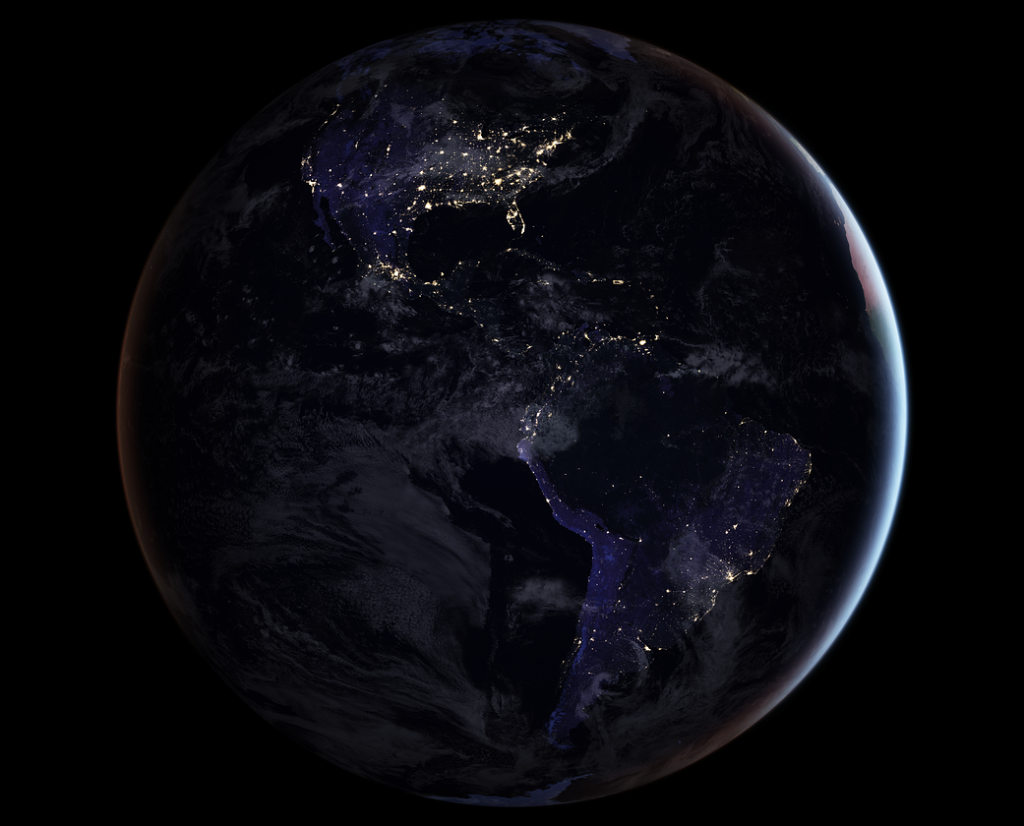
4. We are all traveling around the Sun at an average velocity of 107,182 kilometers per hour. And at the same time, we are also spinning with an enormous speed – that could be 1000 miles per hour depending on your position on Earth.
5. Earth receives between 100 and 300 metric ton of cosmic dust (the dust which exists in outer space, as well as all over planet Earth) every day (data collected from satellite observations.) However, some other estimates suggest that the incoming dust could be as low as 5 metric ton per day.
6. Despite the fact that the earth is made up of more than 70% of water, do not be surprised to learn that water accounts for less than 1% of Earth’s mass.
7. In size, Earth is slightly larger than Venus.
8. Although the Earth was form 4.5 billion years ago, life appeared 3.8 billion years ago, and hominids only 6 million years ago. If Earth’s history was represented in a day, life appeared at 4 a.m., and humans at almost 11:59 p.m.
9. The force of gravity in the Hudson Bay region of Canada is less than that on the rest of the planet. There are various theories that scientists associate with this effect but no one is sure as to why this is the case.
10. It is also interesting to note that more than 95% of Earth’s ocean are still unexplored.
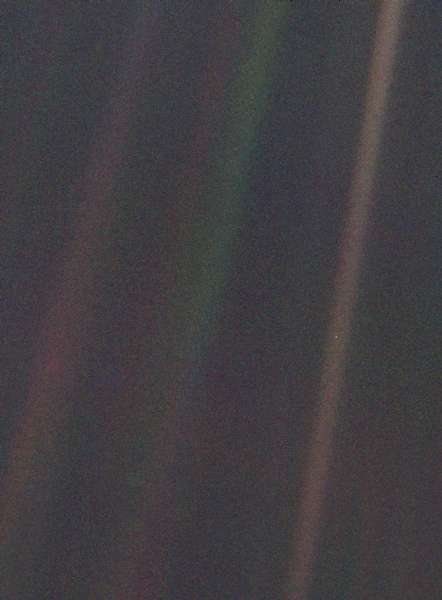
About Earth and the Moon
11. Tides in oceans on Earth happen due to the force of gravitation between the Earth and the moon. Moon pulls up water in oceans and even in lakes, due to its gravitational force.
12. Earth has just one moon whereas Jupiter has 67 moons.
13. The moon (radius – 1,738 kilometer) is the fifth largest moon in the Solar System after Ganymede (orbits: Jupiter), Titan (orbits: Saturn), Callisto (orbits: Jupiter), and Io (orbits: Jupiter).
14. The Moon reflects Sun’s light on the Earth when the Sun is on the other side of the Earth meaning when there is the night on one side of the planet.
15. Another interesting fact about the earth is that that the same side of the moon is always facing the Earth, meaning the moon is in synchronous rotation with the Earth.
16. Moon is Earth’s only permanent natural satellite. (FYI – there are 181 known natural moons that are orbiting the full-size and dwarf planets in our solar system)
17. Moon, earth’s natural satellite, is thought to have been formed from Earth after the impact of a Mars-sized object, named Theia.
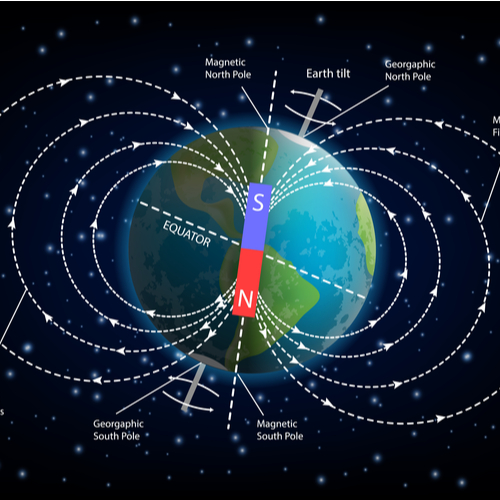
Extinction of species, the naming of Earth, length of day, magnetic field, the temperature at the core, density
18. It is a fascinating fact to note here that 99% of all species that ever existed on the Earth are now extinct.
19. Earth is the only known planet that supports life. However, attempts are underway to help life survive on other planets like Mars.
20. It is also the only planet not to be named after a Greek or Roman god. Jupiter is named after the king of Roman gods and Uranus is named after the Greek god of the sky. The Earth’s name comes from the Germanic word “eorthe”, which means “ground, dirt, or soil”.
21. The speed of rotation of Earth is gradually slowing down; meaning that in some 140 million years from now, the length of a day on Earth would be 25 hours.
22. Earth was once believed to be the center of the Universe and scientists believed that the Sun and other planets revolved around it. However, this assumption was proved incorrect.
23. Because of the presence of inner Nickel-Iron core, Earth has a strong magnetic field. This magnetic field is also responsible for preventing heavy solar winds from blowing on the Earth and causing damage to various life forms.

24. Earth is composed of four main layers – inner core, outer core, mantle, and crust.
25. Earth’s inner core has a temperature between 5400 and 6000 degrees Celsius. Thus, making it hotter than the surface of the Sun (surface temperature – 5500 Celsius).
26. The thickest of all the four layers of the earth is the mantle, which is 2900 kilometers thick. This layer has a consistency of caramel and is composed of a hot mixture of molten rock.
27. The thinnest of all the layers is the crust, which is on an average 30 kilometers deep on an average on the ground.
28. Earth also has the largest natural satellite as compared to any other planet considering the size of Earth and the moon (the Moon is approximately 27% the size of the Earth.)
29. The Earth also has the credit of being the densest planet in the Solar System. It has an average density of 5.51 grams per cubic centimeter.
Tectonic plates, the shape of the earth, bluish appearance, atmosphere, oxygen
30. Earth is the only planet in the solar system that has tectonic plates underneath its surface. These plates are floating on top of the magma inside of the Earth. When these plates collide, earthquakes happen. Movement of these plates is also very important for other geological and life-supporting purposes.
31. The diameter of Earth from the North Pole to the South Pole is shorter than its diameter across the Equator by 43 km. Thus, Earth is not a perfect sphere and this difference in the diameter is the results of Earth’s rotation.
32. Earth’s core is almost 85-88% iron and its crust is almost 47% Oxygen.
33. Earth is also known as the “Blue Planet” because of its bluish appearance from the outer space. Almost 70% of Earth’s surface is covered with water.
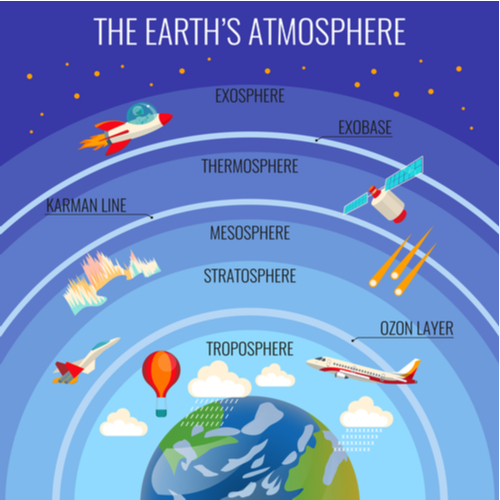
34. There are five layers in Earth’s atmosphere including – the Troposphere, the Stratosphere, the Mesosphere, the Thermosphere, and the Exosphere. Earth’s atmosphere is the thickest from ground level up to a height of 50 km and extends up to 10,000 km.
35. Airplanes fly at a maximum altitude of 60,000 feet which is almost 18.288 km.
36. The pressure and density go on decreasing as we move farther away from the Earth’s surface and travel towards space.
37. The first 11 km from the Earth’s surface has 75% of the atmosphere.
38. The last layer of the Earth’s atmosphere – the Exosphere – extends from 700 km above mean sea level to 10,000 km in outer space.
39. Did you ever wonder why we have a leap year every four years? This is because a year on earth is not exactly 365 days but it is 365.2564 days. This extra 0.2564 day is adjusted with an extra day (leap day) in the month of February every four years.
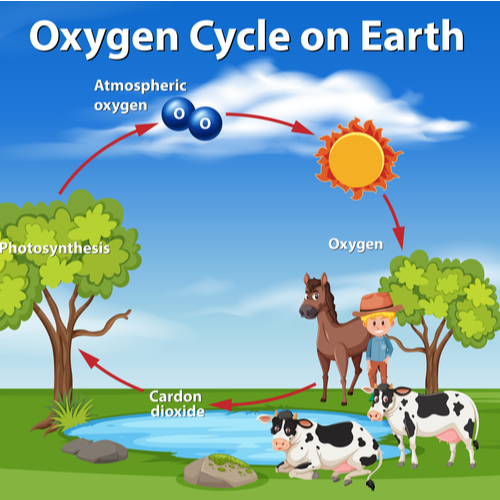
40. Earth is the only planet that contains 21% oxygen in its atmosphere and liquid water on its surface.
41. Spacecrafts need to achieve an extremely high velocity in order to break Earth’s gravitational force and reach space. The minimum speed needed is called “escape velocity”, and for Earth is 11.19 km/s (40,270 km/h; 25,020 mph). That is why very strong rockets are used for takeoff; the bigger the spacecraft, the bigger the rockets.
42. According to the Union of Concerned Scientists (UCS) Satellite Database, there are more than 7,560 operational satellites currently in orbit around Earth.
43. “Earth day” is celebrated annually on April 22nd since 1970. It is an international movement with members from over 190 countries that aims to generate support for environmental protection.
Craters, seasons, layers, oceans, rings
44. Earth does not have many craters (less than 200) on the surface as the other planets have.
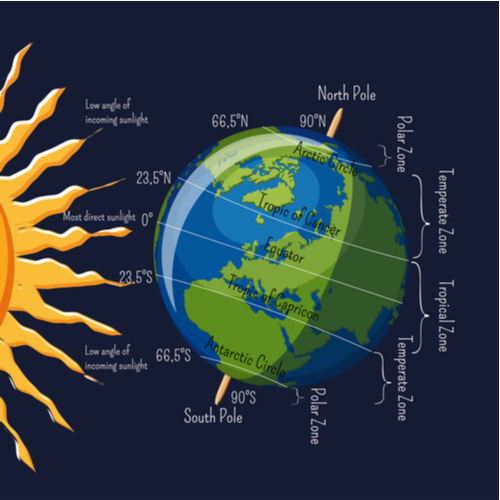
45. Earth’s axis of rotation is tilted 23.4 degrees with respect to its plane of rotation around the Sun. The seasons on Earth are due to its tilt against the Sun. Because the Earth has an almost circular orbit around the Sun, the four seasons have approximately the same length.
46. Earth is exactly at a distance of 1 AU from the Sun. AU (the distance from the Sun to Earth) is the standard unit of measurement of the distance of celestial bodies from the Sun. And Earth’s measurements are used as a standard.
47. The Earth is the fifth largest planet in terms of size and mass.
48. The Earth has an Ozone layer which protects it from Sun’s powerful and harmful UV rays.
49. Light from the Sun reaches the Earth in approximately 8 minutes and 20 seconds.
50. Almost 70% of the earth’s surface is covered by oceans that contain 97% of the planet’s water. These oceans are home to great mysteries and tons of geographical features that are not even available on the land. E.g. Earth’s longest mountain range is also underwater.
51. It is estimated that life initiated in the oceans some 3.8 billion years ago.
52. The Earth has no rings. However, Jupiter has 4 sets of rings and Saturn has 4 main groups of rings and 3 fainter groups of rings.
53. Did you know that a magnetic field reversal takes place every 40,000 years on average? At the time of this reversal, the magnetic polarity of the earth will change that will bring a change in the direction of Earth’s magnetic field.
54. The highest point on Earth, above sea level, is the summit of Mount Everest, which is 8,818 meters (29,029 feet) high.
55. The tallest volcano/mountain on Earth, measured from the base to the summit, is Mauna Kea in Hawaii, however, most of it is under water. It is 10,203 meters (33,474 feet) tall.
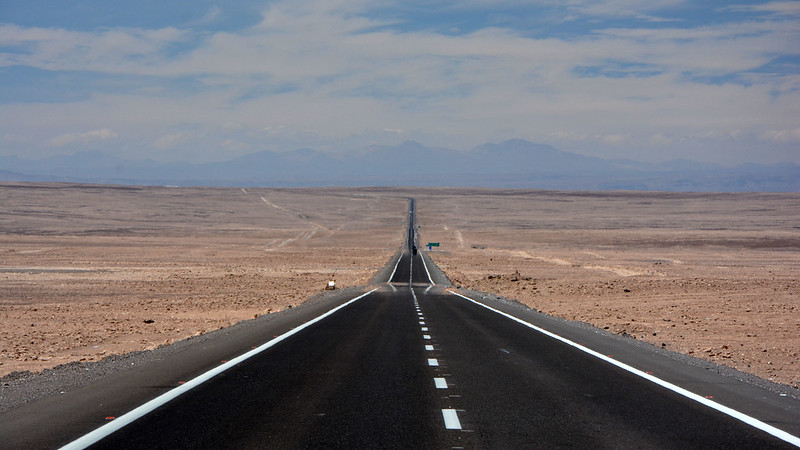
56. The Atacama Desert in South America is the driest place on Earth, outside of the Antarctic dry valleys. It receives an average of less than 1 mm of rain a year, and has the record of the longest dry period, with 172 months.
Highest and deepest points on Earth
57. The highest point: The peak of Ecuador’s Mount Chimborazo, located just one degree south of the Equator is the highest point on Earth. At this point, the Earth’s bulge is greatest.
58. The deepest known place: “Challenger deep” – near a trench called the “Mariana Trench” beneath the surface of the Pacific Ocean to the southeast of Japan — is the deepest known place on Earth. This trench is nearly seven miles deep.
Hottest and coldest locations on the Earth
59. The place that holds the record of having had the highest air temperature on Earth is Furnace Creek in the Death Valley in California, USA; on July 10th 1913 it reached 56.7 °C (134.1 °F). While the place with the lowest air temperature registered is Vostok, Antarctica, with -89.2 °C (-128.6 °F) on July 21st 1983.
60. The Lut Desert in Iran and the Sonoran Desert along the Mexican-USA border hold the record of highest surface temperature, having recorded up to 80.8 °C (177.4 °F).
61. The coldest permanently inhabited place: Oymyakon, a village in Siberia, Russia, is where the temperature reached -68 degree Celsius. And the coldest temperature ever recorded on Earth was at Antarctica’s Vostok station – minus 89.2 degree Celsius.
Flattest, wettest and driest places
62. Wettest place: Mawsynram in Meghalaya, India is the wettest place on land on Earth. It receives an average annual rainfall of 11,871 mm. This place is just 10 miles away from the town of Cherrapunji (another record holder for the wettest month and year ever.)
63. Driest place: Dry Valleys in Antarctica is the driest place on Earth. This place has seen no rainfall for the past 2 million years. This is a 4800 square kilometer region with no ice, snow or water.
64. Flattest country: the Maldives is the flattest country in the world with an average highest above sea level of 2.4m.
65. The longest river on Earth, is the Nile in Africa. It runs through or along the border of 11 countries. It starts in rivers which flow into Lake Victoria and ends in the Mediterranean Sea, and is 6,650 kilometres (4,132 miles) long. However, Amazon is the biggest river in the world in terms of the water that flows down it.
66. Unknown minerals: scientists have recently calculated that there are more than 1500 minerals that are still undiscovered in the Earth. We are aware of more than 5000 minerals but many are still unknown. Another captivating fact here is that the Earth’s mineral diversity is unique to itself and is not duplicated on any other planet, not even the rocky exoplanets.
67. Carbon-di-oxide spitting lakes: there are three crater lakes – Nyos, Monoun, and Kivu, that sit in Cameroon and on the border of Rwanda and the Democratic Republic of Congo. These lakes spit carbon dioxide at an enormous level and have been the cause of deaths of hundreds of people in the past. This phenomenon happens because of the presence of magma below the surface of the lakes and this magma releases carbon dioxide into the water which causes the resulting spewing of the gas into the atmosphere.
68. Rocks that move by themselves: Some rocks on our planet Earth move by themselves. However, scientists have failed to capture the actual motion of these rocks because they move so little but their movement is certain.
69. Out of Earth: The boundary between Earth’s atmosphere and outer space is known as the Karman Line. This boundary lies at a distance of 100 km from Earth’s sea level. Anyone who goes beyond this line is considered an astronaut.
. . . continue reading facts about Earth on the next page
